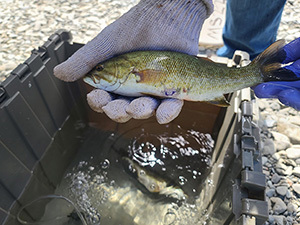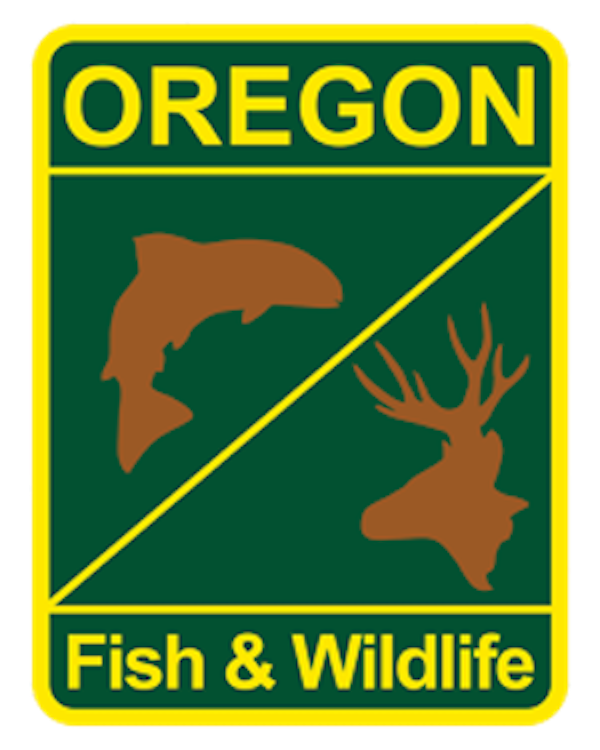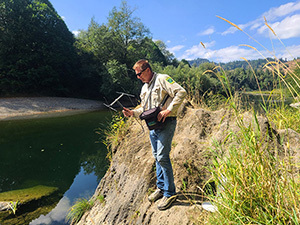Coquille River Fish Report for 9-12-2022
ODFW radio-tagging Coquille smallmouth bass in research project
Coquille River - Coquille, OR (Coos County)

by OR Department of Fish & Wildlife Staff
9-12-2022
Website
CHARLESTON, Ore – ODFW biologists are radio-tagging smallmouth bass in the Coquille River to learn more about these invasive non-native fish negatively impacting fall chinook salmon.
Captured smallmouth bass eight inches or larger get a surgically implanted radio tag that can be tracked for up to 18 months depending on battery life. Biologists then use radio telemetry equipment to track movements of the tagged fish.
Tagging efforts are concentrated in the South Fork Coquille River where much of the smallmouth bass population occurs. Some bass may be tagged in other portions of the Coquille Basin.
It is important to know when and where these fish move to overwintering areas in the Coquille, and when they move back upriver in the spring. Timing information may help biologists remove more smallmouth bass during electroshocking, or experiment with alternative removal methods such as trapping.
"We're looking for opportunities to get as many of these non-native fish out of the Coquille system as possible," says Gary Vonderohe, Assistant District Fisheries Biologist.
Anglers are reminded it is illegal to keep a radio-tagged fish. Radio-tagged bass will have an antenna protruding from the side of the fish. The goal is to radio tag about 20 smallmouth bass.
Photos
More Reports
Mussel harvesting closed from Columbia River to north side of the Yachats River
Columbia River
9-9-2022
SALEM, Ore.—The Oregon Department of Agriculture (ODA) and the Oregon Department of Fish and Wildlife (ODFW) announce the closure of...... Read More
OR Department of Fish & Wildlife Reports
for Thursday, September 8th, 2022: ODFW Recreation Report
Gerber Reservoir: The reservoir is very low at 1 percent full
Upper Klamath Lake: Best fishing is from a boat as bank access is limited
Sprague River: Flows are low at 97 cfs
Sprague River- North Fork: The river above the fire is a better bet for fishing
Sycan River: Fishing not recommended due to extensive drought and fire
Wood River: Fishing for brown trout and redband trout should be good this week
Chetco River: The bag limit reduction is in place to reduce harvest on older age wild Chinook
Coos River: Salmon fishing slowed down over the past week
Fish Lake : Reservoir draw down should be slowing
Rogue River- Lower: Fall Chinook fishing has been good in the estuary
Alsea River: Fall Chinook fishing has been good on the Alsea
Nehalem River: This past week fishing remained good
Nestucca River: The wild coho fishery for Nestucca Bay starts Saturday, Sept. 10
Siletz River: Still fish holding throughout the system
Yaquina River: Fall Chinook fishing is starting to pick up on the Yaquina
Gold Lake: Open for fishing, no new fishing reports
Leaburg Lake: Oversized fish and catch rates have been REALLY good!
McKenzie River: Will be stocked again this week
Middle Fork of the Williamette: The Middle Fork Willamette River is open to bait below Dexter Dam only
Santiam River ( North Fork) : Flows should hold steady for the next few weeks
Santiam River ( North Fork) Above Detroit Lake: Flows are currently around 6520 cfs
Santiam River (South Fork): Summer steelhead returns are improved this year
Odell Lake: Odell Laker
Crooked River: The Crooked River is flowing at 179 cfs below Bowman Dam
Frog Lake: Frog Lake was last stocked on June 28
Pine Hollow Reservoir: Water levels have been dropping, limiting angler success
Prinevile Reservoir: Trout fishing continues to be good near the dam
Wickiup Reservoir: The reservoir is very low at 10 percent

Website Hosting and Design provided by TECK.net
